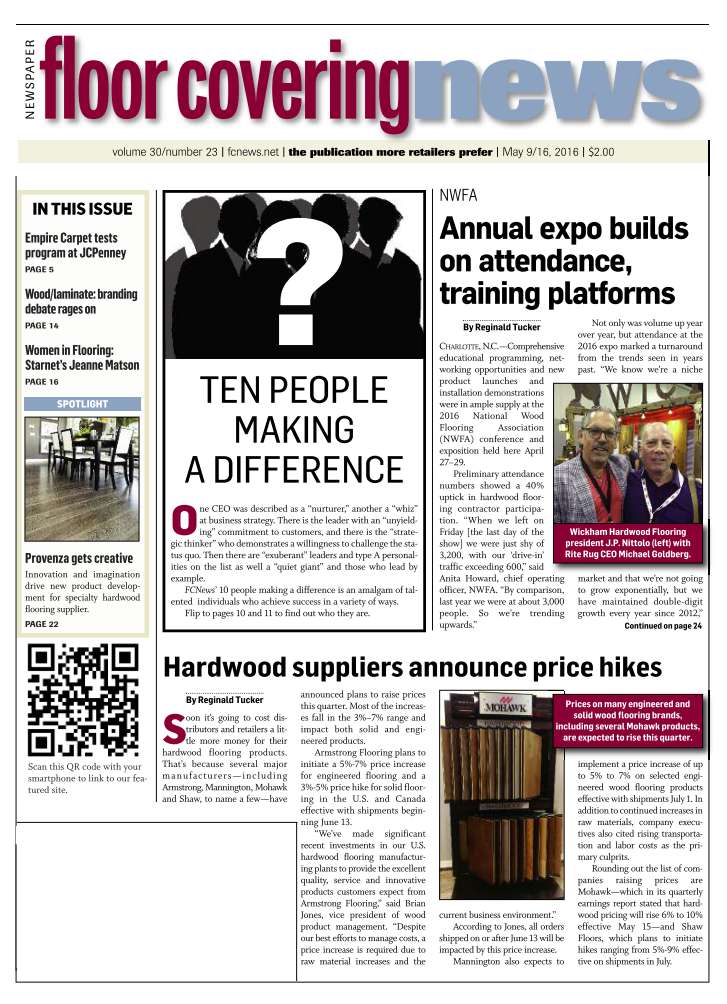May 9/16, 2016; Volume 30, Number 23
By Christopher Capobianco
Questions about the analysis and handling of asbestos-containing floor coverings continue to come up, although it’s been many years since they were sold. There is still a lot of this material on the floor and there is a lot of misunderstanding. Asphalt floor tile (AFT) and vinyl asbestos tile (VAT) were the primary asbestos materials, although felt backing in some sheet resilient floors and some adhesives also contained asbestos. AFT—which first came in a 9 x 9 format and then, later, in 12 x 12—was one of the first flooring materials to use asbestos and was manufactured starting around 1920. VAT came out in the 1930s and became more popular than AFT. Using synthetic binders instead of asphalt allowed the VAT to be manufactured in lighter hues with a wider range of colors.
Contrary to popular belief, tile size is not the way to tell the difference between VAT or vinyl composition tile (VCT), which came out as VAT was being phased out. This is an important consideration as many people think the 9 x 9 tile contained asbestos and 12 x 12 did not. There was a lot of 12 x 12 VAT used, so don’t assume otherwise.
The federal law mandating that asbestos be removed from building materials was passed in the late 1970s, and the U.S. Environmental Protection Agency (EPA) published the new rules in 1980. Many in our industry think that any of these products sold after 1989 were “asbestos free,” but EPA gave the industry some time to work through their inventories by stating that: “manufacture, importation and processing must cease by August 27, 1990.” For two years after the product could be sold, with the “ban on distribution in commerce” taking effect on August 25, 1992. Most manufacturers stopped using asbestos in floor coverings well before this date but it was still legal to sell them. Furthermore, floor covering adhesives containing asbestos could be manufactured until August 1996 and sold until August 1997.
When considering the removal of an existing floor, it is important to be very aware of these dates and do your best to ascertain the age of the floor covering or have the material and adhesive tested. Be sure it is legal for you to remove these floors in your area; it may require a licensed asbestos abatement contractor. You should also get a current copy of Recommended Work Practices for Removal of Resilient Floor Coverings from the Resilient Floor Covering Institute (RFCI). The booklet contains instructions for proper removal along with the following statement: “Warning: Do not sand, dry sweep, dry scrape, drill, saw, beadblast or mechanically chip or pulverize existing resilient flooring, backing, lining felt, paint, asphaltic cutback adhesives, or other adhesives. These products may contain asbestos fibers or crystalline silica. Avoid creating dust; inhalation of such dust is a cancer and respiratory tract hazard…Unless positively certain that the product is a non-asbestos-containing material, presume that it contains asbestos. Regulations may require that the material be tested to determine asbestos content.”
Be advised that any floor and/or adhesive installed well into the 1990s could contain asbestos; assume it does unless it is tested. Remember: both 9 x 9 and 12 x 12 tiles—as well as some sheet goods and black adhesive—may contain asbestos. Bottom line: better to be sure before you rip up that floor!

